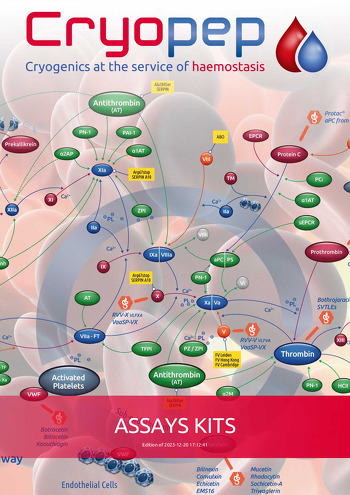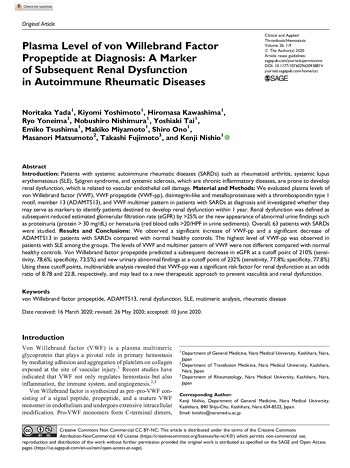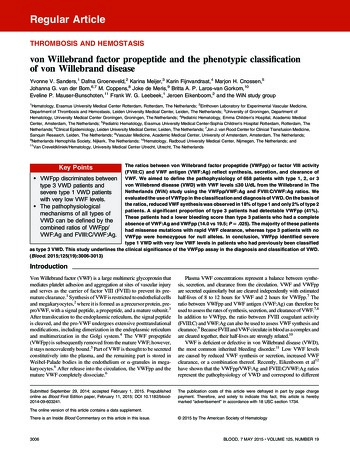HEMOSTASIS COAGULATION ROUTINE REAGENTS VON WILLEBRAND FACTOR VWF PROPEPTIDE ANTIGEN
HEMOSTASIS COAGULATION RESEARCH REAGENTS ASSAYS KITS ELISA
INTER-ARRAY VWF:PP ELISA Kit
The VWF:PP ELISA kit is intended for the quantitative enzyme immunoassay of von Willebrand factor propeptide (VWFpp) in plasma.
This assay allows, in association with VWF:AG, to characterize the type of VWF deficiency.
The VWF:PP ELISA provides a result with few steps in 90 to 150 min with high precision.
The components in the kit for 96 tests have excellent stability. The VWF:PP is designed for manuai processing and automated ELISA systems.
Advantages
The calibration is performed against the International Standard.
Control and calibrator are included in the kit.
Informations
Von Willebrand Factor (VWF) is a large multimeric plasma protein with important functions in primary hemostasis. VWF is synthesized in endothelial cells and megakaryocytes as pre-pro-VWF. After various posttranslational modifications and cleavage of the signal peptide, the propeptide (VWF:PP) is also cleaved off by the protease furin in the trans-Golgi-system.
A non-covalent complex of VWF and VWF:PP remains stored in Weibel-Palade bodies (endothelium) or in a-granules (megakaryocytes). Activation or stimulation of these cells will release the complex. VWF and VWF:PP dissoclate and metabolize with different half lives. While VWF has a half-life of approx. 12 hours, VWF:PP is metabolized with a half-life of only approx. 2 hours.
Documentation
Download the product sheetPrice list, safety data sheets and notices are accessible to our registered customers.






References
| 33-13.02.095.0096 | Kit | 12 x 8 tests |
























